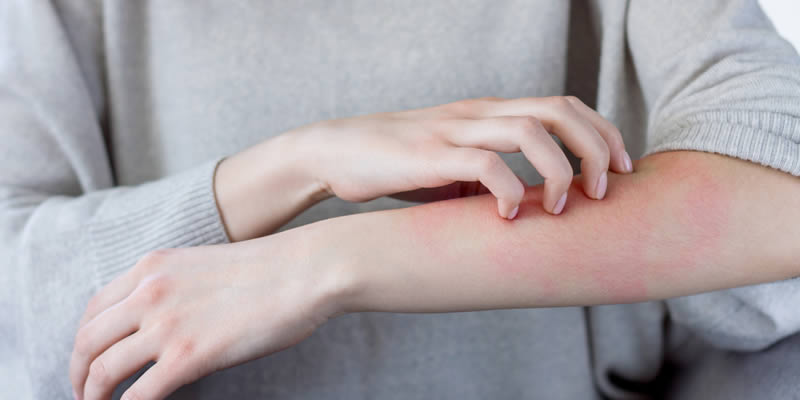There is good news for itching sufferers as researchers say they have found significant differences between non-hairy and hairy areas of the skin in relation to itch issues.
Chronic skin itching can be extremely uncomfortable and is very common among people who might suffer from skin conditions such as eczema, urticaria and contact dermatitis.
Professor Liang Han, from the Georgia Institute of Technology’s School of Biological Sciences, said: “Itch is a significant clinical problem, often caused by underlying medical conditions in the skin, liver, or kidney. Due to our limited understanding of itch mechanisms, we don’t have effective treatment for the majority of patients.”
But, until recently it was commonly thought that the mechanisms behind itchy skin were all the same.
But Professor Han’s research team has found evidence to suggest that there is a difference between itches in non-hairy and hairy areas of the skin.
The technical term for smooth, non-hairy places of the body is glabrous skins and they found itching that develops in these places, such as as on the palms of hands and feet soles develop in completely different ways to itching in other areas.
School of Biological Sciences graduate student Haley Steele, who was also involved in the research work said, itching on the soles of the feet or the palms of the hand is “one of the most debilitating places”.
- Itchy skin and diabetes
- Speak to other people about itchiness in the Diabetes Forum
She added: “If your hands are itchy, it’s hard to grasp things, and if it’s your feet, it can be hard to walk. If there’s an itch on your arm, you can still type. You’ll be distracted, but you’ll be OK. But if it’s your hands and feet, it’s harder to do everyday things.”
The researchers said their in depth work at skin itching has discovered that “actual neurons that send itch are different populations. Neurons that are in hairy skin that do not sense itch in glabrous skins are one population, and another senses itch in glabrous skins”.
The research think their findings could help revolutionise future skin treatments and make clinicians think differently.
Professor Ron Feldman, from the Department of Dermatology in the Emory University School of Medicine, said: “To date, most treatments for skin itch do not discriminate between hairy and glabrous skin except for potential medication potency due to the increased skin thickness in glabrous skin.
He added that their findings “provide a rationale for developing therapies targeting chronic itching of the hands and feet that, if left untreated, can greatly affect patient quality of life”.
The findings of the study have been published in the Proceedings of the National Academy of Sciences.







